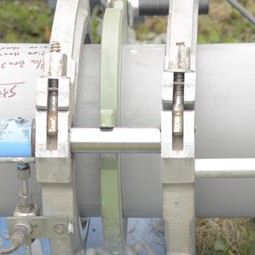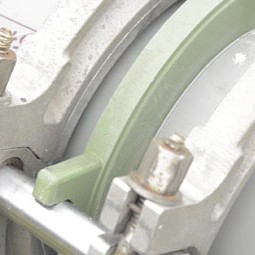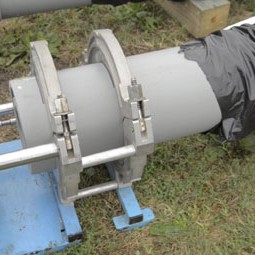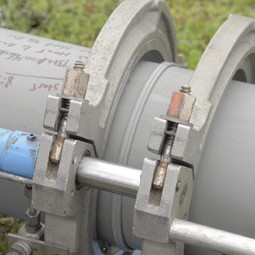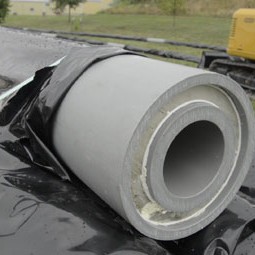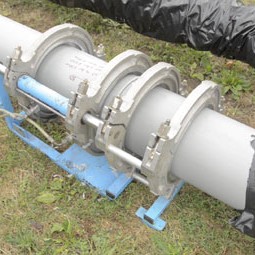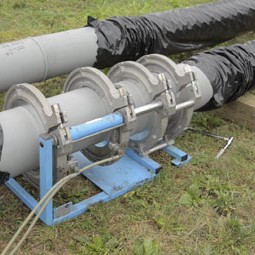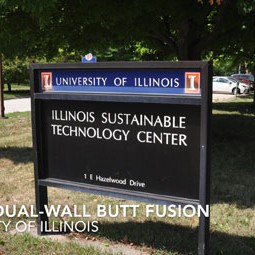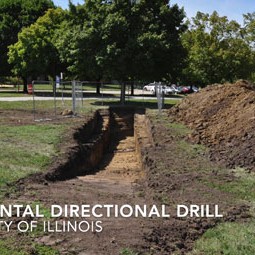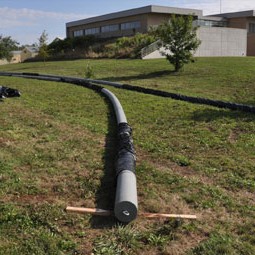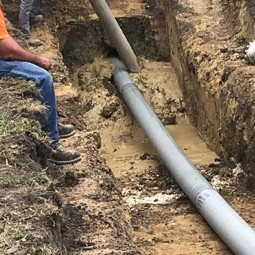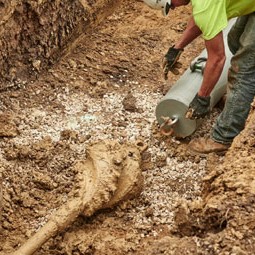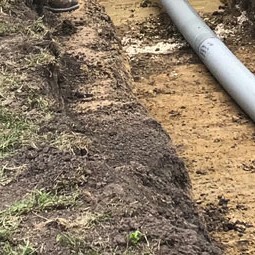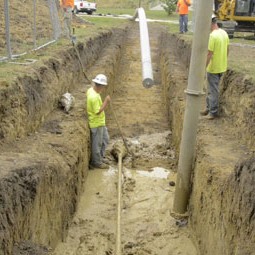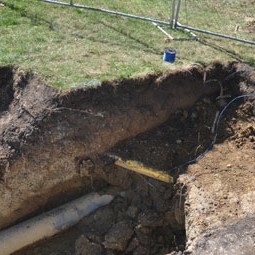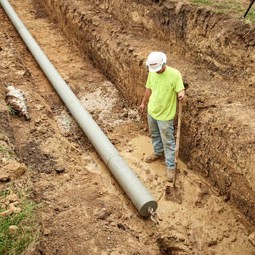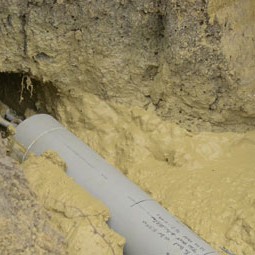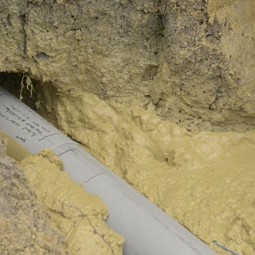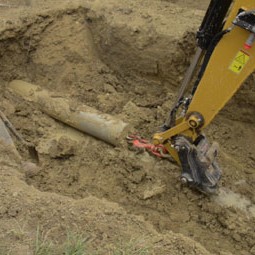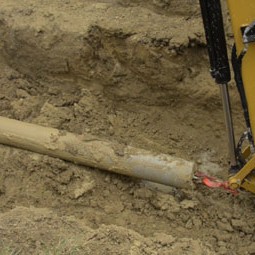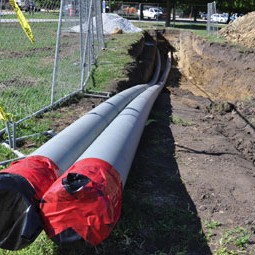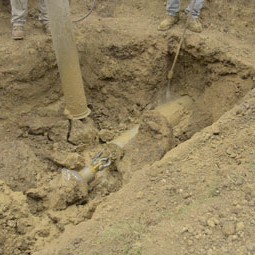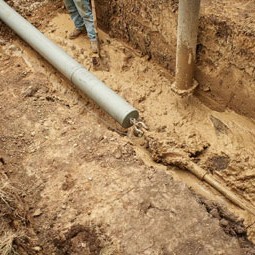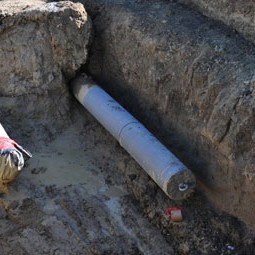NIRON ALL PRO INSTALLED IN ILLINOIS
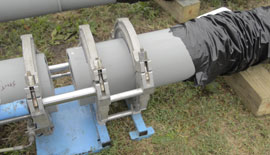
NIRON All PRO electrofusion pipes and fittings for a high-temperature hydronic heating system installed on the main campus in Urbana-Champaign, Illinois at the University’s “Center for Sustainability” building. The Institute for Sustainability, Energy and Environment (ISEE) at the Champaign-Urbana campus was created to lead an interdisciplinary approach to researching solutions for the world’s pressing sustainability, energy and environmental needs today and tomorrow. The University of Illinois has used both traditional PPR in the past, and in more recent times has selected the higher performance PP-RCT class of PP materials. The mechanical staff there is very familiar with the chemical and corrosion resistance and the long-term performance capability of PP-RCT piping systems, especially for higher temperature water conditions. When faced with expansion of their physical plant and the associated high temperature hydronic heating system, the University of Illinois in Champaign, Illinois, USA was faced with some challenging design considerations. Further, this project was being designed for the Universities Institute of Sustainability, Engineering and Environment, so there were additional considerations to be considered consistent with the goals of this particular institution. As part of the future expansion of the school’s Institute for Sustainability, Energy & Environment, the University constructed a new Sustainability Technology Center. Heating for the building was provided by means of high temperature hot water to be distributed from a boiler located in a remote utility building to the new center by means of underground supply and return lines. The lines inside the building then distribute the water throughout the building to supply the hydronic heating network. A key factor in the design of the system was that the pipes had to be routed along a route that required them to cross under an existing roadway and a boulevard median which contained rows of exiting mature trees. Close to the entry of the building, the site contained existing landscaping and finished parking lots. As such a goal for the design of the piping system emerged from the onset. Given that the basic premise of the department where the system was to be installed is involved in sustainability and environmental friendliness, it was understood that excavating a trench through the tree line and taking down some of the mature trees was not an option. A basic goal of the installation was that at least a major portion of the pre-insulated pipe had to be installed by means of directional bore in an already preinsulated pipe. This was a worthy goal indeed. However, no known installations of this kind had been able to be identified by the University in discussion with multiple manufacturers. In fact, many manufacturers reported that this simply couldn’t be done. That is, until the University contacted Nupi Americas. Nupi Americas had recently innovated its unique All-Pro pre-insulated pipe system, which consists of a polypropylene piping system manufactured of high temperature PP-RCT materials for the carrier pipe construction and utilizing a PP outer jacket. The insulation of the system is provided with injected polyurethane foam insulation into the annulus. Given the construction of identical carrier pipe and secondary containment pipe materials, this allows for the use of several different methods to join the system whereby the inner and outer jacket could be fused in a pressure tight manner, but also providing for a system whereby the inner and outer pipe can be interconnected in a rigid assembly. Given that the inner and outer pipes could be fixed to remain in a stable position, this allows for the insulation to be maintained in a stable position, even if the pipe were to be bent, or pulled or moved in any way. As such, this system allows for the ready installation of the assembled double walled pre-insulated pipe by means of the directional bore method, making it perfect for the needs of the project that was under consideration by the University. The design requirements of the system involved a flow rate requirement of 400 gallons per minute (25.25 liters per second) of fluid to be transported at a design temperature of 180oF (82oC) at a pressure of 100 psi (6.9 bar). To handle this fluid, a nominal 6” (160mm) Niron PP-RCT SDR 7.3 carrier pipe was selected which had sufficient excess pressure rating. The head loss through this pipe for the required flow rate results in 1.69 psi per 100 feet of pipe. The total distance required for the pipe to be run from the mechanical building to the new Center for Sustainbility building was 700 feet for both the supply and the return line (1,400 feet total). It was decided that of the total 700 foot run, approximately 320 feet of the installation was to be installed by directional bore. The remaining 380 feet of straight pipe was to be installed using a traditional open trench design in a location where excavation would not require the removal of any trees or plants or cause the disruption of any wildlife. The piping was delivered to the site in 40 foot sections, and the remaining straight runs of pipe were to be welded and installed by the simultaneous butt welding method. The advantage of simultaneous butt welding for this kind of application are numerous. First and foremost, one of the advantages is that the inner and outer pipes can be fixed to each other by means of an end plate which is set back approximately a half of an inch (12mm) from the ends of the pipes. The pipes are thereby rigidly fixed to each other, which when welded results in a rigidly interconnected pipe whereby the position of the pipes relative to each other and the insulation remain fixed. However, a further benefit is that the outer jacket is completed at the same time as the inner pipe, thereby providing efficiency and savings in total installed cost. However, perhaps most importantly, the simultaneously butt-welded system results in a pressure-tight outer joint. This means that when the pipe is later pulled into the hole, the joints remain intact and remain pressure tight. Joint construction in pre-insulated pipe outer jackets are notoriously poorly designed and are a point in a buried pre-insulated pipe which is subject to compromise and future leaks. Nupi’s innovative All-Pro pre-insulated piping systems manufactured with the PP-RCT high temperature resin solve many of the problems that have long existed with traditional steel pre-insulated pipe systems. The materials are not only highly inert to the interior heating fluids, but they are also completely resistant to soil corrosion. Further, due to the nature of the highly crystalline thermoplastic material, the properties of the material allow it to be directly buried in compacted soil without having to also add expensive expansion joints and concrete thrust blocks. Unlike steel, the material loses the ability to push its way through soil as it gains temperature. Though it remains robust interms of resisting internal pressure, it does not maintain sufficient strength to overcome soil friction and thus it maintains its position in the soil in a fully restrained manner. And though it develops some internal stress through the course of being restrained, the values are exceptionally low and never get to the point where it results in failure. This is a marvelous feature, which avoids the very thing which is most problematic with steel systems. It avoids movements which could compromise the outer jacket, thereby causing water intrusion and eventual corrosion failure of the steel pipe (something that happens with steel despite the added cost of expansion loops and concrete thrust blocks). And even though by contrast the Niron All-Pro will not move, due to the innovative BFX2 and EFX2 joining methods, the system can be installed in a pressure-tight manner, which results in a kind of belts-and-suspenders type of double protection and a system that can be counted on for a very long life. In addition to the numerous design advantages from a technical standpoint, due to the unique methodologies that are available in the All-Pro BFX2 and EF methods, the system also provides for a lower total installed cost than traditional systems. Further, given the strength and rigidity that can be achieved by means of a BFX2 simultaneously butt fused system, the system can be installed as an already pre-insulaated system using the directional bore method, thereby saving enormous excavation and trenching/backfilling costs. This allows for the best of both worlds, a system that is superior in design, but also lower in installed cost.

